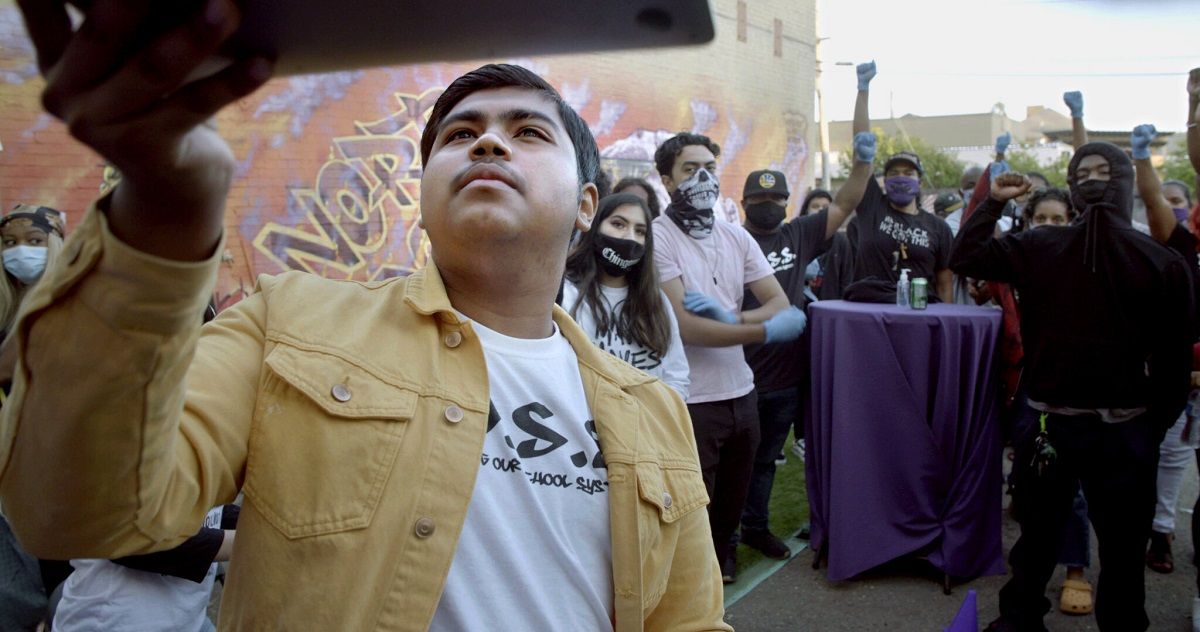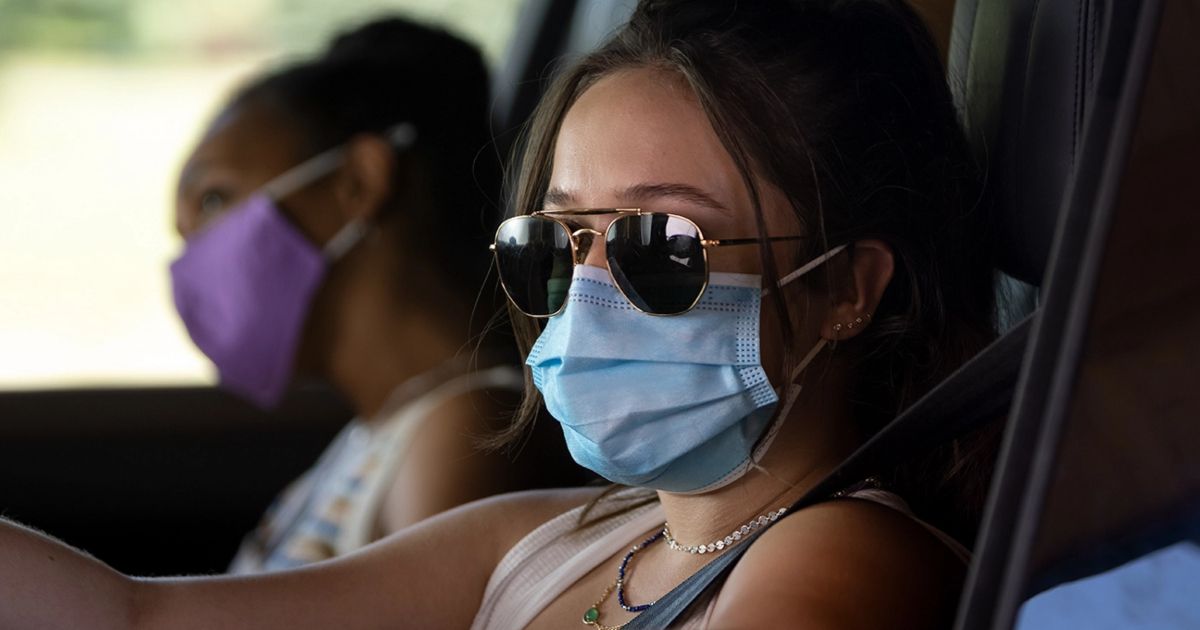Throughout the past three years, the COVID-19 pandemic has greatly affected the lives of billions. It became the catalyst for major changes in various industries, and the film industry was no exception. Movie productions had to be halted or postponed, release dates were shuffled around, movie theaters had to close or take immense precautions, and studios had to adapt by embracing the power of online streaming services.
Updated July 15, 2023: This article has been updated to add some more flavors of COVID Cinema to look back on those unprecedented experiences of life.
All of this chaos also birthed a new genre of film: COVID Cinema. It’s a whole subsection of films that put the pandemic as the basis of its story or, at the very least, acknowledge its existence. These films are the result of filmmakers needing to express themselves during these times using whatever resources they have at their disposal, and since it was nearly impossible to go out and shoot a movie the traditional way, these films tell a more personal story than the conventional studio picture.
The Horror Films of COVID Cinema
One of the first films to be released about the pandemic is a small British independent horror movie by director Rob Savage called Host. Dealing with themes of self-isolation and social anxiety, the film perfectly captured the essence of what it felt like during the early stages of the pandemic. Host cleverly uses the video chat gimmick to its advantage, mimicking the contemporary situation where everyone has had to resort to having Zoom meetings for several months. The film has a 100% fresh rating on Rotten Tomatoes, and it is one of the masterpieces of COVID Cinema.
With the critical and financial success of the film, it was only a matter of time before Hollywood wanted in on this, and on December 2020, we got the Michael Bay-produced train wreck of a film, Songbird. Directed by Adam Mason, who was mostly known for directing music videos and a few low-budget horrors, Songbird was a movie that exploited the horrific nature of the pandemic in exchange for cheap scares in order to make a quick buck. The film was panned by critics, earning only 9% on Rotten Tomatoes, and is one of the worst films to come out of COVID Cinema (which is saying something, considering movies like Corona Zombies have been made). There’s no better evidence for this than this list of Twitter takedowns for the film.
Thankfully, it didn’t stay that way, and the genre quickly bounced back with the Ben Wheatley film, In the Earth. After premiering at Sundance in January 2021, the film was released in the United States in April of that year to positive reviews. What’s most impressive about this flick is that it was written and directed by Wheatley over the course of 15 days, and you’d have no way of knowing that by the sheer brilliant production quality of it. In the Earth does certainly deliver a series of good scares that will keep viewers on the edge of their seats throughout its runtime.
2022 also saw the release of Kimi from director Steven Soderberg. The movie focuses on a young woman named Angela Childs (Zoe Kravitz), whose agoraphobia has been exacerbated following the COVID-19 pandemic. The movie features minimal locations and with most of the actors separate for the majority of the movie, and takes place in a post-COVID-19 world. It is people dealing with a new normal and features a heavy emphasis on people working from home and using technology to maintain in touch. It takes the traditional structure of a thriller and used the realities of COVID-19 to enhance the isolation and fear.
Love and Romantic Films of COVID Cinema
Besides the dark and the grim, a vast amount of COVID Cinema is, in fact, charmingly light-hearted rom-coms and romantic dramas. These films mostly follow a similar premise, whereby a couple that’s in a failing relationship are forced to live together through the lockdown. We see these types of claustrophobic couples in Locked Down (starring Anne Hathaway and Chiwetel Ejiofor), The End of Us (starring Ben Coleman and Ali Vingiano), 7 Days (starring Karan Soni and Geraldine Viswanathan), and Together (starring James McAvoy and Sharon Horgan). While this trope can feel rather repetitive, each of these films brings something unique to the table by either having a bombastic third act, impeccable dialogue, spectacular performances, or just that realistic and grounded mumble-core flavor.
For those wanting something with a little more flare but still within the familiarly romantic territory, Sam Levinson’s Malcolm & Marie might be the film. While not being about the pandemic in its narrative, the film was the first Hollywood feature to be written, financed, and produced during that time. Although receiving mixed reviews from critics, lead actors Zendaya and John David Washington were praised for their chemistry and performance, with the former earning a Best Actress nomination at the 26th Critics’ Choice Awards.
However, dig a little deeper into the romance films of COVID Cinema, and you’ll find a terrific rom-com about the Platonic relationship between a Spanish teacher and her student. Directed by the actor Natalie Morales, Language Lessons is pretty similar in execution to Host, being that it’s told entirely through video chats. However, instead of having a group of people, this film only has two lead characters (Morales and the delightful actor-director Mark Duplass). It’s a fresh and inventive way to tell this lovely tale of blooming friendship affection, and one that is definitely not to be missed by anyone looking for something entirely different from usual romance films (including the aforementioned COVID-19 ones).
The Documentaries of the COVID-19 Era
Documentaries have always been one of the central aspects of keeping records of a certain time, theme, or subject, and with COVID accumulating all of that in times of our fast paced culture, it was inevitable that there will be documentaries made on those trying times. And it becomes as much a reflection of the pandemic era as of our generation when taking a look at these documentaries makes it feel like a blast from an almost forgotten past when it has only been about two to three years since then. This theme is especially evident in those documentaries that show a certain period with references to the ongoing events or trends that blew up at that time.
For example, Peter Nicks’ Homeroom tells the story of those trying times through a group of seniors from Oakland High School. While at the start, obviously with their upcoming prom and graduation, their excitement feels almost tangible through the screen until more details of the pandemic start getting publicized, and their plans end up taking the shape of Zoom graduations.
However, the documentary’s main focus remains on the students and how they deal with the situation at hand through social media and their struggle to make themselves heard against police brutality during the BLM protests, as many of those students happen to be people of color. Moreover, it shows how the pandemic and everything else that followed made a significant impression on those students, with them becoming the reflection of a larger mass, and how this will remain a reference point in their lives that they will always carry with them throughout their lives.
Other documentaries like Life in a Day 2020 try to remain a sort of record of history with no prevalent context or story to tell. The documentary becomes a sort of collage of crowdsourced video footage from across the world depicting different people dealing with the situation as it finds them. From a grieving mother who lost her son to the disease and one boy reading a book with his pet rat, it becomes a jumble of experiences from people from all walks of life from all over the world to say that all of us are in this together, even six feet apart.
Future of the Genre
The COVID-19 pandemic might seem like a distant memory, but it is still a major reality that people are dealing with. Hollywood, as an industry itself, is still recovering from it. It will be curious to see how future films tackle the subject, if at all. The material might feel too soon for people, and audiences may want escapism from the realities they lived through. After all, it took a while until movies set during the Iraq War were a hit.
Maybe in a decade, a movie will tackle the COVID-19 pandemic and become a major awards contender. Maybe characters will reference the pandemic in dialogue in action blockbusters as something they lived through. It is hard to grasp that such a major event happened still, but it will be the subject of many films for years to come.
This story originally appeared on Movieweb


-(1).jpg)

